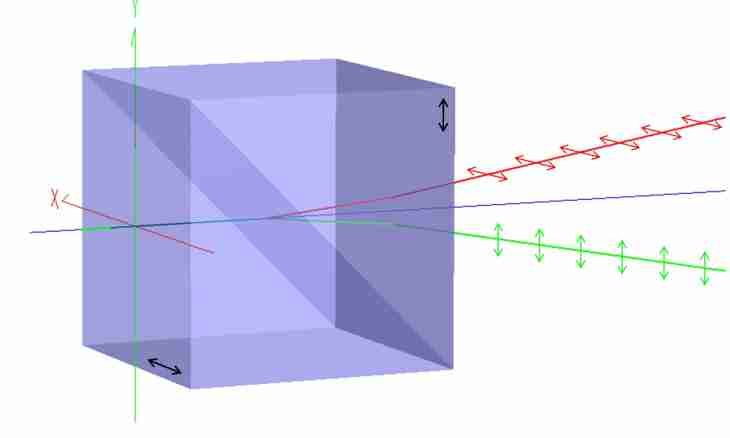Prism is called the many-sided geometrical figure which bases are congruent parallel polygons, and side sides — parallelograms. Finding of diagonal of a prism — one of the most widespread geometrical figures in optics - an example of that, how interconnected basic provisions of geometry.
It is required to you
- - calculator with trigonometrical functions,
- - roulette,
- - angle meter.
Instruction
1. Prisms are direct (side sides form a right angle with the bases) and inclined planes. Direct prisms are divided into correct (their bases are convex polygons with the equal parties and corners) and semiregular (their sides are regular polygons of several types). Let's consider calculation of diagonal of a prism on the example of a parallelepiped — one of types of this polyhedron.
2. Diagonal of a prism is called the piece connecting tops of two various sides. As, proceeding from definition of a prism, its diagonal is the triangle hypotenuse, the task of finding of diagonal of a prism comes down to calculation of one of the parties of this triangle on Pythagorean theorem. Solutions, depending on basic data can be a little.
3. If sizes of corners which are formed by prism diagonal with side sides or the basis are known, or a tilt angle of sides of a prism - legs of a triangle are calculated by means of trigonometrical functions. By itself, only the size of corners is not enough — usually the data necessary for calculation of the size of one of legs of a triangle which hypotenuse is prism diagonal are in addition provided in tasks. Or, if it is about determination of diagonal of a prism that is called upon — all measurements necessary for the solution of this task are taken manually.
4. Example. It is necessary to find the diagonal of the correct quadrangular prism if the area of its basis and height are known. Determine the size of the party of the basis. As the bases of such prism are squares, for this purpose it is necessary to calculate a square root from the area of the basis (a square - an equilateral rectangle).
5. Calculate basis diagonal. It is equal to the party of the basis increased by a square root from two.
6. The hypotenuse of a prism will be equal to a square root from the sum of squares of legs, one of which is the prism height which is at the same time the party of a side side, and the second — basis diagonal.

